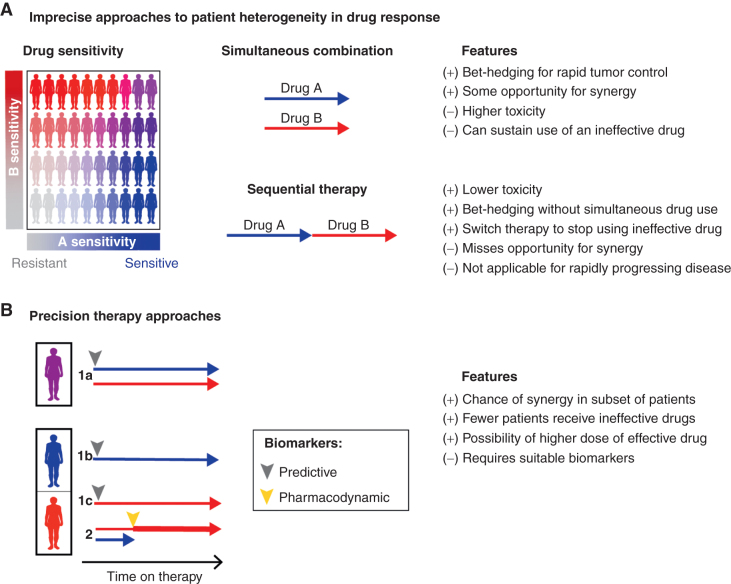Figure 6.
Possible strategies for combining multiple cancer drugs. Patient heterogeneity in drug response presents a fundamental challenge in designing combination cancer therapies. A, Existing, imprecise strategies for use of multiple drugs include first-line combination therapies for all patients and sequential therapy. B, Precision-based approaches can use pretreatment predictive biomarkers to select one or more agents likely to be active in a given patient (patients labeled 1a, 1b, and 1c), or use on-treatment pharmacodynamic biomarkers (patient 2) to identify which agents are active or inactive in a patient to stop use of an inactive agent and increase dose of an active agent (particularly if combination therapy required dose reduction). Here, treatment “arrows” are to compare strategies and are not intended to evaluate response duration.

